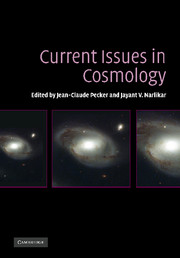Book contents
- Frontmatter
- Contents
- List of contributors
- Preface
- Part I Observational facts relating to discrete sources
- Part II Observational facts relating to background radiation
- Part III Standard cosmology
- Part IV Large-scale structure
- Part V Alternative cosmologies
- Part VI Evidence for anomalous redshifts
- 15 Anomalous redshifts
- 16 Redshifts of galaxies and QSOs: The problem of redshift periodicities
- 17 Statistics of redshift periodicities
- 18 Local abnormal redshifts
- 19 Gravitational lensing and anomalous redshifts
- Part VII Panel discussion
- Index
18 - Local abnormal redshifts
Published online by Cambridge University Press: 15 December 2009
- Frontmatter
- Contents
- List of contributors
- Preface
- Part I Observational facts relating to discrete sources
- Part II Observational facts relating to background radiation
- Part III Standard cosmology
- Part IV Large-scale structure
- Part V Alternative cosmologies
- Part VI Evidence for anomalous redshifts
- 15 Anomalous redshifts
- 16 Redshifts of galaxies and QSOs: The problem of redshift periodicities
- 17 Statistics of redshift periodicities
- 18 Local abnormal redshifts
- 19 Gravitational lensing and anomalous redshifts
- Part VII Panel discussion
- Index
Summary
Abstract
Observations of “abnormal” (non-Dopplerian) redshifts in the spectrum of nearby sources (the Sun, binary stars, close-by galaxies in groups), and of “abnormal light deflection in the vicinity of the Sun,” are presented. Emphasis is given on the need of reconsidering the observations, which have not been seriously considered since the 1970.
During the early 1970s, Chip Arp started discovering several cases of “abnormal” (i.e., non-Dopplerian) redshifts in the spectra of extragalactic objects. It is one of the most important observational discoveries of our times, in my opinion. At about the same time, I became interested in the abnormal redshifts found in the spectrum of the Sun. J.-P. Vigier, at the same time, was involved in understanding the nature of the photon, along the lines defined by Louis de Broglie, and he did not accept the idea of a zero rest-mass of the photon. We put our efforts together, and we tried to link the abnormal redshifts observed in the local, nearby, universe as consequences of some “tired-light” mechanism, closely linked with the rest-mass of the photon, which we assumed to be a “non-zero restmass,” without actually knowing anything else but an upper value of this rest-mass.
I feel it is a need today to remind the audience of these local, solar and others, abnormal redshifts, although they were mentioned extensively several years ago, but they were neither properly confirmed nor really accounted for. Almost all relevant references can be found in our review paper (Pecker 1977).
- Type
- Chapter
- Information
- Current Issues in Cosmology , pp. 217 - 222Publisher: Cambridge University PressPrint publication year: 2006
- 1
- Cited by



